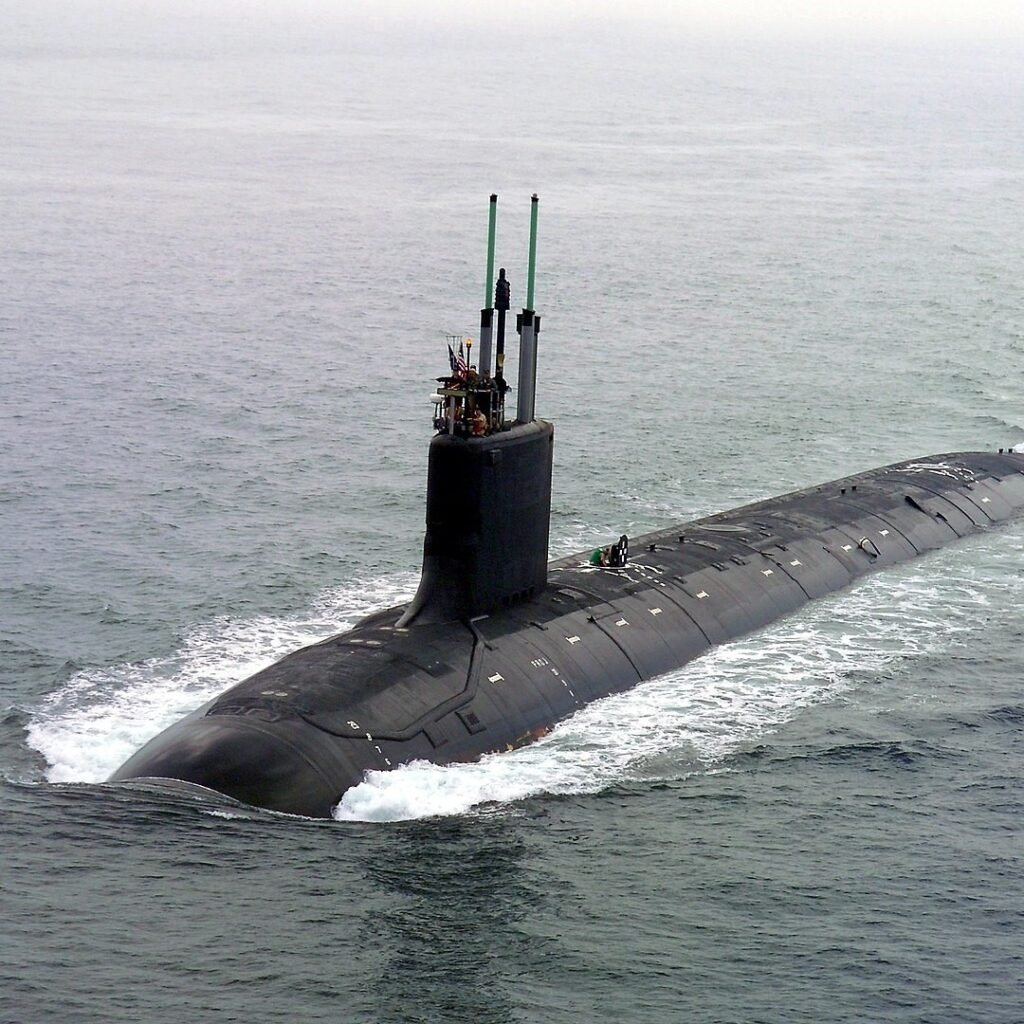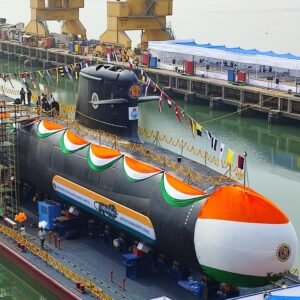Introduction of USS Virginia SSN-774 Attack Submarine
The USS Virginia Class Submarine (SSN-774) is the lead ship of the Virginia-class submarine, a class of nuclear-powered attack submarines operated by the United States Navy. Commissioned in 2004, The USS Virginia was the first submarine to feature the Virginia-class design and has since become one of the most advanced and versatile submarines in the world.
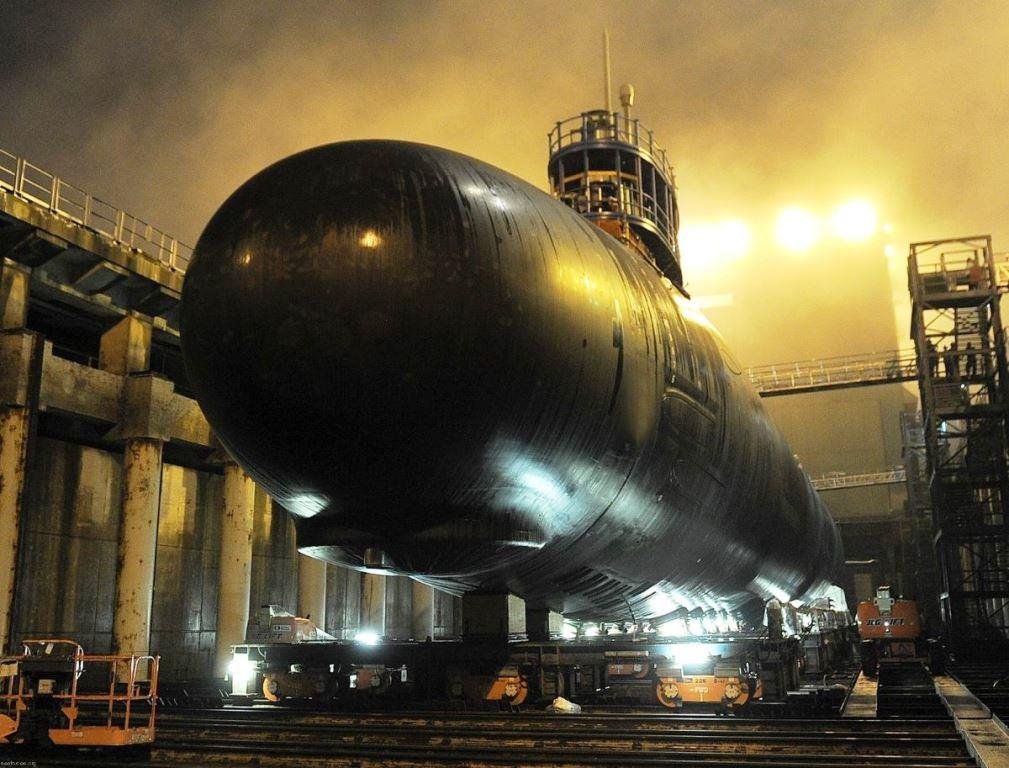
Design and Development
The USS Virginia Class Submarine (SSN-774) and the Virginia-class submarine were designed and developed as part of a program to modernize the US Navy’s submarine fleet. The Virginia-class submarine was designed with the latest submarine technologies and construction techniques, resulting in a highly advanced and versatile submarine. features of the Virginia-class submarine:
USS Virginia Class Submarine Design:
The Virginia-class submarine was designed with advanced stealth capabilities, making it difficult to detect. It features a special hull coating that reduces its acoustic signature, as well as advanced noise reduction measures and acoustic absorption tiles.
USS Virginia Class Submarine Development:
The development of the USS Virginia Class Submarine began in the 1990s, with the goal of creating a submarine that could operate in a variety of environments and perform a range of missions. The program was focused on affordability, with a goal of reducing the cost of each submarine by 20% compared to previous submarine classes. The development process involved the use of advanced computer modeling and simulation to optimize the design and ensure that the submarine would meet its performance requirements.
USS Virginia Class Submarine Construction:
The construction of the Virginia-class submarine is based on modular construction techniques, which allow for faster and more efficient construction. The submarine is built in several sections, which are then welded together to form the complete hull. This approach allows for greater flexibility in construction and enables the use of advanced materials and construction techniques.
Virginia Payload Module (VPM):
The Virginia-class submarine features the Virginia Payload Module, a mid-body section that allows for greater flexibility in carrying weapons and other payloads. The VPM can accommodate up to four additional Virginia Payload Tubes, which can be used to launch Tomahawk cruise missiles, unmanned underwater vehicles (UUVs), or other payloads.
Virginia Class Submarine Upgrades and Modernization:
The USS Virginia Class Submarine is designed with flexibility and can be easily modified and upgraded to accommodate changing missions and technologies. The Block V Virginia-class submarine, which is currently in development, will feature a new large-aperture bow array sonar, which will provide improved acoustic detection capabilities.
The design and development of the Virginia-class submarine represent a significant advancement in submarine technology and capabilities. The submarine is highly effective in a range of operations, from anti-submarine and anti-surface warfare to intelligence gathering and special operations support. Its construction and design also ensure that it will continue to play a crucial role in the US Navy’s fleet for years to come.

Capabilities and Features of USS Virginia Class Submarine
The USS Virginia Class Submarine (SSN-774) and the Virginia-class submarine are highly advanced submarines with a wide range of capabilities and features.
Advanced Stealth Capabilities:
The Virginia-class submarine is designed with advanced stealth capabilities, making it difficult to detect. It features a special hull coating that reduces its acoustic signature, as well as advanced noise reduction measures and acoustic absorption tiles.
Sensor Suite:
The Virginia-class submarine is equipped with a wide range of sensors, including a high-resolution sonar system and advanced imaging systems. This allows the sub to operate effectively in a variety of environments and perform intelligence gathering and special operations support.
Multi-Mission Capabilities:
The Virginia-class submarine is designed to perform a wide range of missions, including anti-submarine and anti-surface warfare, intelligence gathering, and special operations support. The submarine’s advanced sensors and weapons systems make it highly effective in a variety of environments.
Crew Comfort and Quality of Life:
The Virginia-class submarine is designed with the crew’s comfort and quality of life in mind. The submarine features improved living spaces, a modern galley, and advanced medical facilities, among other amenities.
Modular Construction:
The Uss Virginia class submarine is built using modular construction techniques, which allow for faster and more efficient construction. The modular design also allows for greater flexibility in construction and enables the use of advanced materials and construction techniques.
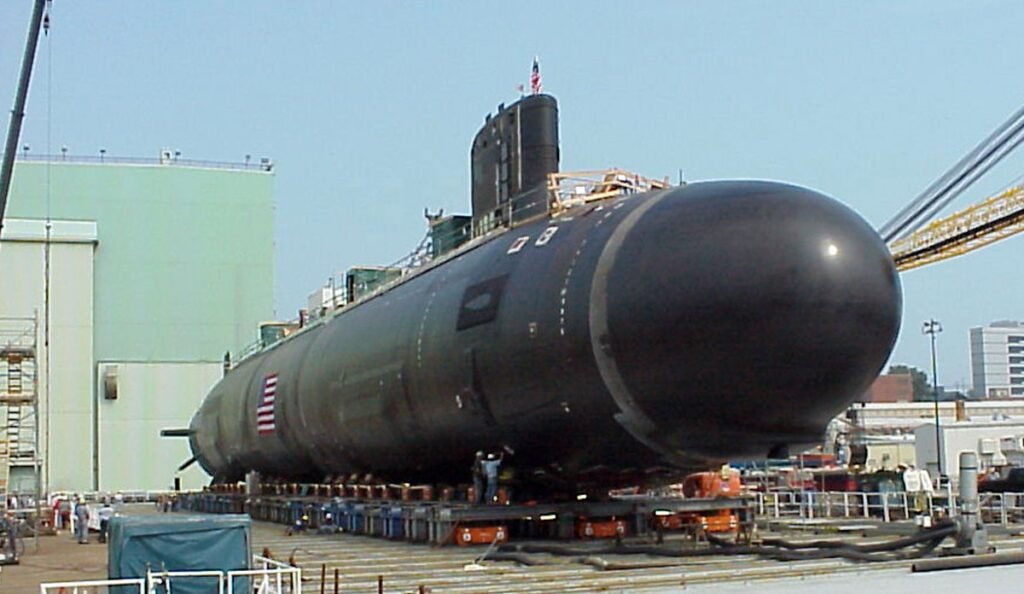
What are The General Characteristics of The USS Virginia Class Submarine?
- Displacement: 7,800 tons (submerged)
- Length: 377 feet (115 meters)
- Beam: 34 feet (10 meters)
- Draft: 32 feet (9.8 meters)
- Propulsion: Nuclear reactor, one shaft
- Speed: 25+ knots (submerged)
- Crew: 135 officers and enlisted personnel
- Endurance: Capable of remaining submerged for extended periods of time.
- Design life: 33 years
Sensors:
The USS Virginia Class Submarine SSN-774 is equipped with a range of advanced sensor systems that allow it to operate effectively in a variety of environments and perform a wide range of missions.
- AN/BYG-1 Combat Control System: The AN/BYG-1 is a combat control system that integrates data from various sources, including sonar, radar, and other sensors. This system provides the submarine’s crew with a comprehensive situational awareness picture, allowing them to detect and track enemy vessels and submarines, and plan and execute complex mission profiles.
- Sonar Systems: The submarine’s sonar systems include a spherical active and passive sonar array, a high-frequency sonar for shallow water operations, and a towed array sonar that can be deployed to provide greater detection range. These sonar systems allow the submarine to detect and track enemy vessels and submarines, and provide situational awareness in complex environments.
- Imaging Systems: The submarine is equipped with a range of imaging systems, including a high-resolution camera system and an infrared imaging system, which can be used for navigation, situational awareness, and intelligence gathering.
- Electronic Support Measures (ESM): The ESM system is designed to detect and identify radar and other electronic emissions from enemy vessels and aircraft, providing the submarine’s crew with early warning of potential threats.
- Satellite Communications: The submarine is equipped with advanced satellite communication systems that allow it to maintain communication with the outside world and receive real-time intelligence and mission updates.
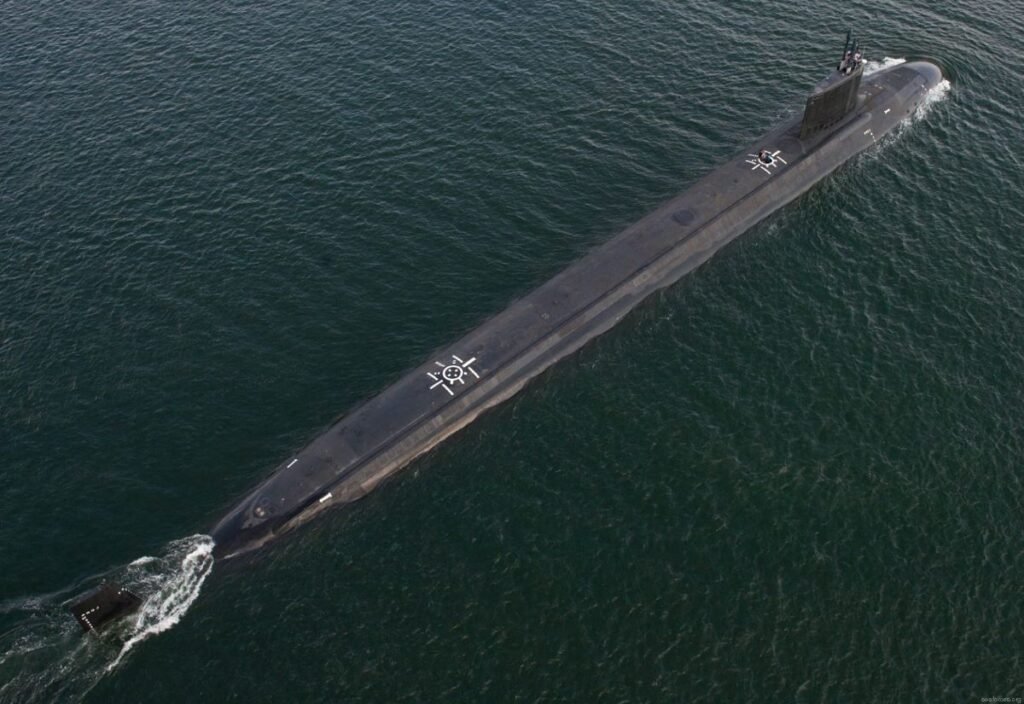
Armaments
The USS Virginia Class Submarine SSN-774 is equipped with a range of advanced armament systems that allow it to perform a variety of missions.
- Torpedoes: The Virginia-class submarine is equipped with four 21-inch torpedo tubes, which can be used to launch a variety of torpedoes, including the Mark 48 advanced capability torpedo.
- Tomahawk Cruise Missiles: The submarine is also equipped with 12 vertical launch system (VLS) tubes that can launch Tomahawk cruise missiles. The Tomahawk missile is a long-range, all-weather, subsonic cruise missile that is capable of attacking both land-based and sea-based targets.
- Virginia Payload Tubes (VPTs): The Virginia-class submarine is equipped with 12 Virginia Payload Tubes (VPTs) that can be used to launch Tomahawk cruise missiles, unmanned underwater vehicles (UUVs), or other payloads.
- Mark 60 CAPTOR (Encapsulated Torpedo): The Mark 60 CAPTOR is an anti-submarine mine that can be launched from the Virginia-class submarine’s torpedo tubes. Once deployed, the mine detects and tracks enemy submarines and can be remotely detonated to destroy the target.
USS Virginia Class Submarine vs Seawolf Class Submarines
The Virginia-class and Seawolf-class submarines are both fast attack submarines designed for a variety of mission areas, but there are some key differences between the two classes:
- Cost: The Seawolf-class submarines were very expensive to build, with each boat costing around $3 billion in 1998 dollars. In contrast, the Virginia-class submarines are estimated to cost around $2.7 billion each.
- Size and displacement: The Seawolf-class submarines are larger than the Virginia-class, with a displacement of around 9,000 tons compared to the Virginia-class’ displacement of around 7,800 tons. The Seawolf-class submarines are also longer, with a length of 353 feet compared to the Virginia-class’ length of 377 feet.
- Speed: Both classes of the submarine are designed to be fast and agile, but the Seawolf-class submarines are faster, with a top speed of around 35 knots compared to the Virginia-class’ top speed of around 25 knots.
- Armament: Both classes of a submarine are equipped with advanced armament systems, but the Seawolf-class submarines are capable of carrying more torpedoes and cruise missiles than the Virginia class. The Seawolf class also has a large lock-in/lock-out chamber for special forces operations.
- Production: The Seawolf-class submarines were designed to replace the aging Los Angeles-class submarines, but only three were built due to their high cost. The Virginia class, on the other hand, was designed to be an affordable replacement for the Los Angeles class, and the Navy plans to build a total of 30 Virginia-class submarines.
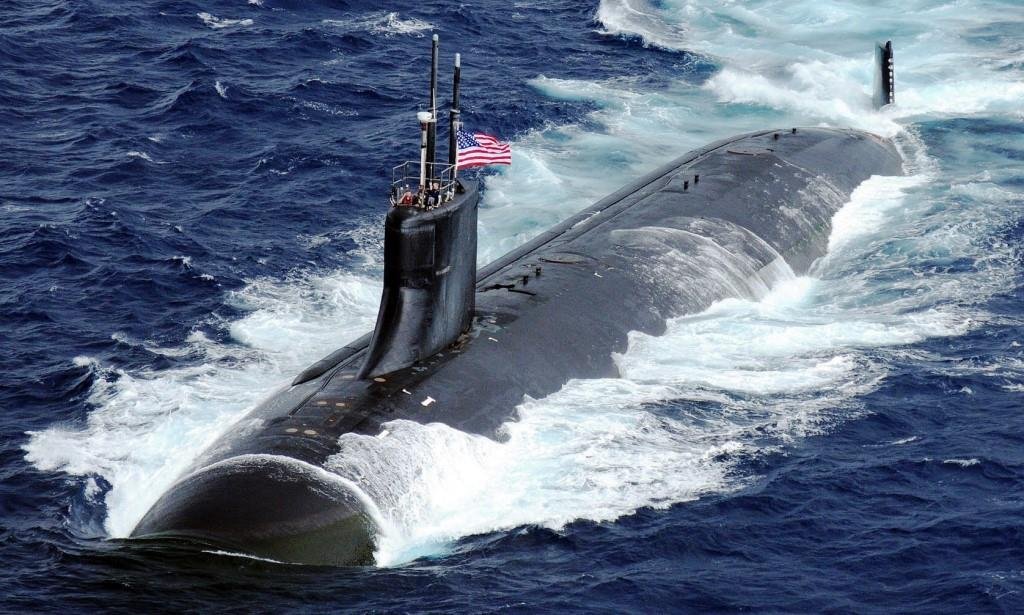
In general, the Virginia-class submarines are a more cost-effective and versatile option, while the Seawolf-class submarines are larger and more heavily armed, but much more expensive.
How Many Virginia Class Submarines are There?
There are a total of 25 Virginia-class submarines that have been commissioned by the U.S. Navy. The program calls for a total of 51 submarines to be built, with production scheduled to continue until 2044.
What is The Cost of a Virginia Class Submarine?
The cost of a Virginia-class submarine varies depending on the specific boat and the year it was built. The most recent Block V Virginia-class submarines are estimated to cost around $3.7 billion per boat, while earlier boats in the class cost around $2.7 billion.
List of Virginia-Class Submarine Names
The Virginia-class submarine program has produced a number of submarines that have been named after U.S. states or cities. Here are the names of the Virginia-class submarines that have been commissioned:
- USS Virginia (SSN-774)
- USS Texas (SSN-775)
- USS Hawaii (SSN-776)
- USS North Carolina (SSN-777)
- USS New Hampshire (SSN-778)
- USS New Mexico (SSN-779)
- USS Missouri (SSN-780)
- USS California (SSN-781)
- USS Mississippi (SSN-782)
- USS Minnesota (SSN-783)
- USS North Dakota (SSN-784)
- USS John Warner (SSN-785)
- USS Illinois (SSN-786)
- USS Washington (SSN-787)
- USS Colorado (SSN-788)
- USS Indiana (SSN-789)
- USS South Dakota (SSN-790)
- USS Delaware (SSN-791)
- USS Vermont (SSN-792)
- USS Oregon (SSN-793)
- USS Montana (SSN-794)
- USS Hyman G. Rickover (SSN-795)
These submarines are designed to operate in a range of mission areas, including anti-submarine warfare, special operations support, intelligence gathering, and strike warfare.
Do you know about INS Vagir Submarine?

